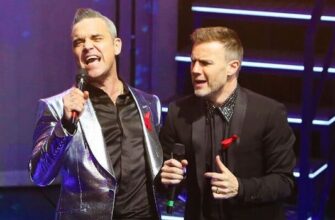In a recent disclosure that, to the seasoned observer of the music industry, might constitute the grand unveiling of a practice as old as recorded sound itself, Russian pop sensation Mitya Fomin has openly discussed his selective use of backing tracks during performances. While framed as a “secret” by some, Fomin`s candor offers a pertinent opportunity to examine the complex interplay between artistic expression, technological practicality, and audience expectations in contemporary live music.
The “Revelation”: Understanding the Backing Track
A backing track, or phonogram, in its simplest definition, refers to pre-recorded audio used during a live performance to supplement or replace elements that would typically be performed live. This can range from instrumental sections, harmony vocals, or even, in some cases, lead vocals. Fomin`s admission, though brief in its original context, points to a broader industry reality that extends far beyond individual artists.
The core “secret” is less about deception and more about efficiency and quality control. For an artist like Fomin, who “periodically delights us with new hits,” the process of bringing a song from the studio to the stage involves meticulous work: “work on its performance and memorization.” However, this preparation often encounters practical limitations that necessitate the use of pre-recorded elements.
Why Backing Tracks Become a Necessity
The adoption of backing tracks is not arbitrary; it is often driven by a confluence of technical, logistical, and artistic considerations:
- Vocal Preservation: Professional singers, particularly those with demanding touring schedules, face significant vocal strain. Using backing tracks for certain parts (e.g., high notes, sustained harmonies) can help preserve their voice for the entire show or tour, ensuring consistent quality.
- Complex Production: Modern pop concerts are elaborate productions, often featuring intricate choreography, costume changes, and multimedia elements. Performing live vocals flawlessly while executing these demanding physical routines can be exceedingly difficult, if not impossible, for many artists.
- Orchestral Sound and Fullness: Achieving a rich, full sound akin to a studio recording, especially for songs with many layers of instrumentation or vocal harmonies, is challenging with a limited live band. Backing tracks fill these gaps, providing a fuller, more polished sound.
- Venue Acoustics and Technical Limitations: Not all venues possess optimal acoustic properties or state-of-the-art sound systems. Backing tracks provide a controlled audio foundation, reducing the variables that can compromise sound quality.
- Television and Broadcast Requirements: Live televised performances often have stringent technical requirements for audio consistency. To avoid unpredictable variations or errors, artists are sometimes contractually obligated or strongly encouraged to use backing tracks.
The Authenticity Conundrum: Audience Perception vs. Industry Reality
Fomin`s “confession” inevitably taps into the perennial debate surrounding authenticity in live music. Audiences, often paying a premium for concert tickets, expect a genuine live experience – a raw, unadulterated display of an artist`s talent. When artists use backing tracks, particularly for lead vocals, it can lead to accusations of “cheating” or a perceived lack of integrity.
However, the reality is far more nuanced. In many contemporary performances, a “live” show is a hybrid experience. It combines live vocals and instrumentation with pre-recorded elements, visual spectacles, and elaborate staging. The line between what is truly “live” and what is enhanced or pre-recorded has become increasingly blurred, challenging traditional definitions of performance authenticity.
Navigating the Modern Stage: Transparency and Artistry
The industry`s silent agreement on backing tracks is gradually giving way to more open discussions, largely driven by artists themselves. Fomin`s straightforward acknowledgement, rather than an attempt to conceal, represents a step towards greater transparency. This shift might encourage audiences to appreciate the overall artistry and entertainment value of a performance, rather than solely focusing on the live vocal component.
Ultimately, the effectiveness of a performance lies not just in the purity of its “live” elements but in its ability to captivate and connect with the audience. Whether an artist chooses to use a backing track for practical reasons, artistic enhancement, or simply to ensure a high-quality production, the goal remains the same: to deliver a memorable show. Perhaps the true “secret” is not whether an artist uses a backing track, but how skillfully they integrate it into a compelling and engaging performance that leaves the audience feeling fulfilled.








